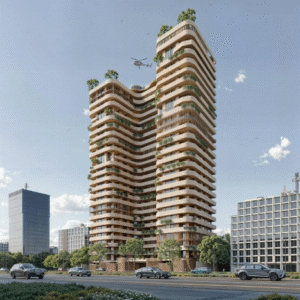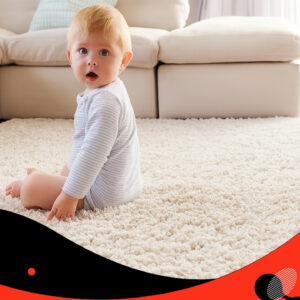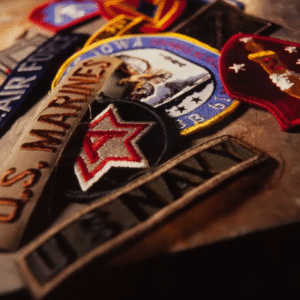How to Build a 3D Product Modeling Services Workflow That Supports AR and VR
The worlds of e-commerce, marketing, and product design are being revolutionized by immersive technologies. Consumers now expect more than static images; they crave interactive experiences that allow them to virtually “try before they buy” or explore products in engaging virtual environments. This demand is driven by the rise of Augmented Reality (AR) and Virtual Reality (VR), and at the heart of these experiences lies high-quality 3D product modeling services. Building a robust and efficient workflow for 3D Product Modeling Services that seamlessly supports both AR and VR applications is no longer a luxury but a strategic imperative for businesses.
Developing such a workflow requires a nuanced understanding of the specific requirements for each platform, from initial 3D Modeling Services to final optimization. It involves more than just creating a pretty model; it’s about generating versatile assets that can deliver compelling AR Product Visualization and immersive Virtual Reality 3D Modeling experiences, while also potentially serving other needs like 3D Modeling for 3D Printing.
The Foundations: Initial 3D Modeling Services and Data Acquisition
Every successful AR/VR product visualization workflow begins with high-quality source data and skilled 3D Modeling Services.
-
Gathering Source Data:
The first step is to collect data. This includes CAD files, engineering drawings, high-resolution photographs from multiple angles, material samples, and detailed specifications (dimensions, weight, texture, color codes).
-
Choosing the Right Tools:
Select 3D modeling software that aligns with your product type and workflow needs. Some tools offer specific advantages for AR 3D Modeling or VR 3D Modeling in terms of optimization features.
-
Creating the Base Model:
This foundational model will be the source for all subsequent optimizations for AR, VR, or even 3D Modeling for 3D Printing. A well-structured base model is critical for the versatility of your 3D Product Modeling Services.
-
Establishing a Single Source of Truth:
All subsequent AR, VR, or 3D Modeling for 3D Printing versions should be derived from this master.
Tailoring for Immersive Reality: AR 3D Modeling and VR 3D Modeling Optimization
-
Polygon Reduction (Poly-Count Optimization):
-
AR 3D Modeling:
A model suitable for AR Product Visualization might be a few thousand polygons.
-
VR 3D Modeling:
VR environments, especially for high-end headsets, can support higher polygon counts than mobile AR, but optimization is still critical to maintain high frame rates (e.g., 90 FPS) and prevent motion sickness. Virtual Reality 3D Modeling allows for more detailed environments but still requires careful management.
-
Texture Optimization:
-
AR 3D Modeling:
Use compressed texture formats and lower resolutions suitable for mobile devices (e.g., 512×512 or 1024×1024 pixels for a single texture map).This is paramount for efficient AR Product Visualization.
-
VR 3D Modeling:
Techniques like texture compression and mipmapping are vital for Virtual Reality 3D Modeling.
-
File Format Selection:
-
AR 3D Modeling:
Formats like GLB (binary glTF) and USDZ (Apple’s Universal Scene Description) are preferred for mobile AR due to their efficiency and ability to package models, textures, and animations into a single file, making 3D Model Augmented Reality delivery straightforward.
-
VR 3D Modeling:
FBX and glTF are common choices, offering good compatibility with various VR development platforms like Unity and Unreal Engine.
-
PBR Materials for Realism:
Both AR 3D Modeling and VR 3D Modeling heavily rely on Physically Based Rendering (PBR) workflows. This ensures consistent and realistic lighting across different AR/VR environments and enhances the 3D Model Augmented Reality.
-
User Interaction Considerations:
-
AR 3D Modeling:
Plan for user interaction like scaling, rotating, and placement in the real world.
-
VR 3D Modeling:
Consider how users will interact with the product within the virtual environment – grasping, moving, or even disassembling. This might require additional rigging or animation in your Virtual Reality 3D Modeling.
Enhancing the Experience: AR Product Visualization and Virtual Reality 3D Modeling
-
AR Product Visualization Implementation:
This involves using AR SDKs (like ARKit for iOS, ARCore for Android, or WebAR solutions) to develop applications that allow users to place your AR 3D Modeling products into their real-world environment.
-
Virtual Reality 3D Modeling Environment Creation:
For VR, you’ll need to build a virtual environment where the product can be showcased.
-
Lighting and Shading in Immersive Environments:
Even with PBR materials, proper lighting within the AR/VR application is crucial. In AR, consider real-world lighting estimation. In VR, set up virtual lights to highlight product features and create the desired mood for your Virtual Reality 3D Modeling.
The Versatility of 3D Modeling for 3D Printing
-
Designing for Printability:
A good 3D Model Maker for 3D Printer understands these differences.
-
Rapid Prototyping:
The same base 3D model used for AR/VR can be quickly adapted for 3D Modeling for 3D Printing, allowing businesses to create physical prototypes for design validation, functional testing, or stakeholder reviews much faster and more cost-effectively than traditional manufacturing.
-
Customization and Personalization:
For products that offer customization, 3D Modeling for 3D Printing allows for the creation of unique, personalized items on demand, directly from customer-configured 3D models generated through the workflow.
Conclusion
Building a 3D Product Modeling Services workflow that effectively supports AR and VR is an investment in the future of consumer engagement. By focusing on initial high-quality 3D Modeling Services, meticulous optimization for AR 3D Modeling and VR 3D Modeling, and exploring the versatility of 3D Modeling for 3D Printing, businesses can create powerful digital assets. Whether through in-house expertise or strategic partnership with specialized 3D Product Modeling Services providers, mastering the creation of a 3D Model Augmented Reality pipeline is essential for any brand looking to truly captivate and convert the modern consumer in an increasingly immersive digital landscape.



